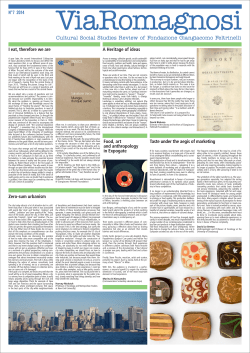
The World Exposition of 1889 in Paris.
The World Exposition of 1889 in Paris. Why have a World Exposition? Each universal exposition was a showcase from the middle of the 19th century for French technical and scientific progress Before the 1889 exposition, there had been others: 1855, 1867 and 1878 1889 1789 was the year which saw the Storming of the Bastille and the start of the French Revolution. 1889 – The French Revolution celebrated its centenary and France wanted to commemorate this with a World Expo. Where would the Expo be held? In all it covered 96 hectares le Champs de Mars le Trocadéro le quai d'Orsay A part of the Seine river The Esplanade in front of Les Invalides. On the right, the Champs de Mars. How did the French feel about this? The French were not at all in agreement with celebrating the Revolution. Even worse, the majority of countries invited were monarchies. They certainly did not want to encourage a celebration that commemorated a revolution! Consequently the international profile of the Expo was a little « fragile » during the preparations for the event. The participants? Nevertheless, some countries wanted to participate indirectly in the Expo. Greece Japan Serbia Persia Siam (now Thailand) Turkey Russia The majority of Latin American countries. Attractions? What could be done to attract people? You could offer “a magic garden” in “fairyland” ? World Expo not only offered this but also much more A special attraction. To be assured of an international customer base, there had to be an attraction that was « different ». An architectural competition was organised. More than 107 entrants suggested projects that were varied and even weird. One of them was for an enormous guillotine 30 metres in height! The Eiffel Tower The supreme symbol for the 1889 Expo was obviously the Eiffel Tower. However, the Tower was not really liked by the Parisians. A petition from 47 famous artists called it « a useless and monstrous building. » They demanded that work should be stopped on the Tower. An unworthy monument. People thought that the Eiffel Tower had no place on the Parisian landscape beside other, more noble, monuments. Electricity. Expo 1889 introduced a important innovation: the use of electricity Bridges Gardens Pavilions And the Eiffel Tower were all illuminated. The Eiffel Tower was literally enveloped in light rays It had a very powerful light at its top (see the photo at the right) Modern life. The introduction of electricity changed visitors’ habits. You could visit the Expo at night The opening hours were extended to midnight It marked the beginning of modern urban life. Gustav Eiffel Mr. Eiffel had an office at the top of the tower, where he went to work every day. He had an immense pride in the project, which lasted for the rest of his life. La Galerie des Machines This is « la galerie des machines », which no longer exists, for it was demolished in 1910-1911. La Galerie de Machines The huge building was 420 metres long, 115 metres wide and 43 metres high! It was one of the biggest building in existence and, at the time, had a greater importance than the Eiffel Tower. Fashion. What would you wear going to the Expo? Here’s a picture from « Figaro Exposition 1889 » – the English version. A lady dressed up to her nines is visiting the Expo. Facts and figures 1. Expo accounts Expenses : 41 500 000 Fr Receipts : 49 500 000 Fr Profits : 8 000 000 Fr An entry ticket Facts and figures 2 Number of visitors : 28 000 000 Number of exhibitors : 61 722
© Copyright 2025





















